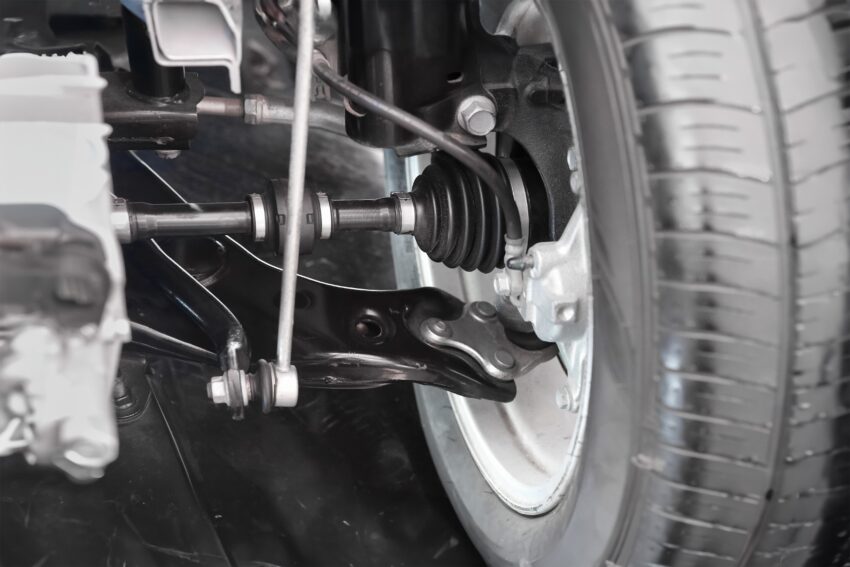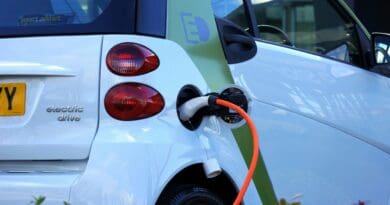The Importance of Suspension in Electric Vehicles (EVs)
When we think about electric vehicles (EVs), we often focus on their futuristic design, eco-friendliness, and cutting-edge technology.
However, one crucial component that significantly influences the driving experience is often overlooked: the suspension system.This article delves into the world of suspension systems in EVs, exploring how they work, the different types available, and why they are so essential to the overall driving experience.
Understanding Suspension Systems
The suspension system in any vehicle acts as a bridge between the wheels and the car’s body, serving several vital functions:
- Absorbing Impacts: The suspension absorbs and dampens the effects of uneven road surfaces, ensuring that these irregularities do not directly transfer to the passengers.
- Dampening Vibrations: By dampening vibrations from both the body and the wheels, the suspension helps maintain a smooth ride.
- Allowing Relative Motion: It permits relative motion between the wheels and the vehicle, which is essential for handling and comfort.
- Force Transfer: The suspension system transfers the forces acting on the wheels to the vehicle’s body, which is crucial for maintaining stability and control.
In EVs, these roles are even more critical due to the added weight from batteries and the instant torque delivered by electric motors.
Types of Suspension Systems
Suspension systems can be broadly classified into three categories: dependent, independent, and semi-independent.
- Dependent Suspension:
- In this system, two wheels on an axle are firmly attached to each other, and when one wheel moves, the other follows at the same angle.
- This type of suspension is less common in modern cars but is still widely used in trucks due to its durability and simplicity.
- Independent Suspension:
- An independent suspension allows each wheel on an axle to move independently of the other, providing a smoother ride and better handling.
- The MacPherson strut is the most popular type of independent suspension, especially in front axles. Higher-end vehicles may also feature independent suspension on the rear axle.
- Semi-Independent Suspension:
- The semi-independent suspension uses a torsion beam instead of a rigid beam, allowing some degree of independence between the wheels while still maintaining a connection.
- This type is commonly found in the rear axles of lower and mid-tier vehicles, offering a balance between cost and performance.
Key Components of Suspension Systems
Suspension systems comprise several essential components, each playing a unique role in ensuring a smooth and controlled ride:
- Wheel Hub: Connects the wheels to the control arms, allowing rotation.
- Control Arms and Beams: Manage the movement of the wheels relative to the body, transmitting lateral and longitudinal forces.
- Springs: Absorb and transmit vertical forces, helping to smooth out uneven terrain. Common types include coil springs, torsion bars, leaf springs, and air springs.
- Shock Absorbers: Dampen vibrations and shocks, improving traction and comfort.
- Anti-Roll Bar: Reduces body roll during cornering, enhancing handling and safety.
- Mounting Elements: Include flexible joints like rubber bushings, ball joints, and strut mounts, which connect suspension components and dampen vibrations.
Suspension in EVs: Balancing Comfort and Performance
The suspension system in an EV must strike a delicate balance between comfort and performance. The added weight from batteries requires more robust suspension systems to maintain stability and control. The instant torque from electric motors means the suspension must handle rapid acceleration without compromising comfort or safety. Moreover, the silent nature of EVs makes any imperfections in the ride quality more noticeable. A well-designed suspension system can mitigate this by absorbing road imperfections and minimizing vibrations.To ensure your EV’s suspension performs at its best, consider using shock vacuum bleeder pumps. These essential tools help maintain the performance of shock absorbers by removing air from the shock absorber fluid, ensuring a bubble-free oil fill, which is crucial for optimal shock performance. A shock vacuum bleed pump operates by creating a vacuum inside the shock absorber, allowing for the efficient filling of suspension oil while eliminating trapped air. This process helps prevent issues like suspension sagging and ensures consistent performance over time, so your EV’s ride remains smooth and stable.
Conclusion
The suspension system in an EV is a critical component that directly impacts both comfort and performance. As EV technology continues to evolve, so too will the suspension systems, pushing the boundaries of what we consider possible in terms of vehicle comfort and handling. The next time you take your EV out for a spin, remember that the unsung hero making your drive so pleasant is, quite literally, beneath you.






